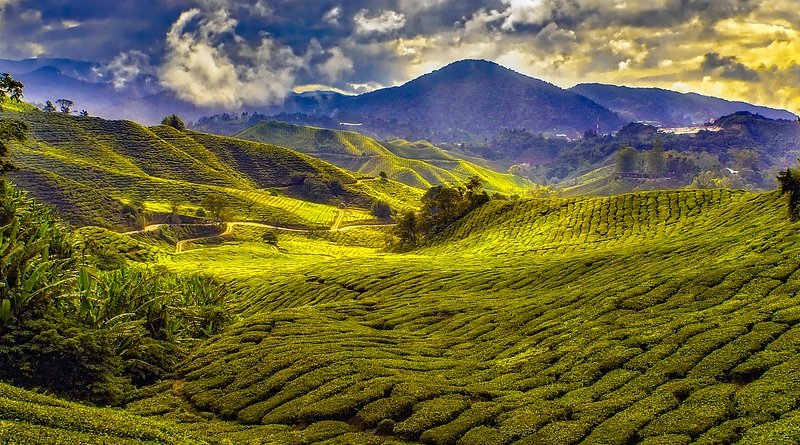Expanding The Possibilities Within Climate Science – OpEd
Climate science is work in progress
The current narratives and theatrics around climate science/global warming have us believe carbon is the culprit, and the world must head towards a net-zero carbon emission society. This is very much a singular explanation for an extremely complex phenomenon that few people truly understand the parameters and dynamics of.
The first hypothesis on the greenhouse effect was developed back in 1896 by Samuel Pierpoint Langley and Frank W. Very. This was enhanced during the 1950-60s, where by 1972 John Sawyer hypothesized that human created carbon dioxide emissions contributed to greenhouse gases. This is where the mantra that “The increase of 25% CO2 expected by the end of the 20th Century, corresponds to an increase of 0.6oC increase in the mean would temperature.”
This still remains a hypothesis, where unlike Einstein’s hypotheses concerning the forces of nature in physics, took more than 100 years to prove empirically. Quantum mechanics is undergoing a revolution in re-understanding with recent discoveries of new sub-atomic particles.
Science is about what we don’t know and understand. Why would climate change be any different?
The great danger current government and media supported narratives poses upon science, is that curiosity is being suppressed on the part of the science community, whose ideas, research and expressions must fall in with the existing narrative.
Alarmist prophecies may resemble the methodology that the original Covid-19 modelling, undertaken by Dr Neil Ferguson’s group at Manchester University in 2020 was based upon. That led to the disastrous public policy responses taken at the time. We must reconsider climate change modelling, that is being used as the basis of the current hypotheses and narratives.
Looking at climate change with greater parameter diversity
Clouds play an important role in the temperature regulation of the Earth. High level Cirrus clouds reflect solar radiation from reaching the surface of the Earth, while low level Cumulus clouds reflect back to Earth terrestrial infra-red radiation from the surface back to oceans and land masses. This is the thermal ‘blanket effect’.
There is a definite causal relationship between clouds and temperature, which can be empirically proven. According to NASA climate scientists, as global temperatures rise, there will be fewer clouds surrounding the Earth.
However, a group of climate researchers through remote sensing have found the opposite to be true. Using Moderate Resolution Imaging Spectroradiometer (MODIS) data, it was found that the earth’s cloud cover had actually increased between the years 2003-2012, and is continuing to do so. Cloud cover over ocean areas, particularly the Indian and Pacific Oceans between latitude 36oS and 68oN are now relatively much higher than other regions. South-East Asia and Oceania have the highest rates of increase.
Cloud cover acts as a self-regulating temperature system, a thermostat where more clouds enshroud around the Earth, when temperatures are high, and vice versa. Consequently, the ability of CO2 to transfer heat in the atmosphere is swamped by natural cloud cover.
With low Cumulus cloud covering urbanized areas around the world, temperatures rising into the atmosphere from heat absorbed by cement based structures, is reflected back to the surface of the Earth, thereby making urban area temperatures rise dramatically.
In 1800, only 2 percent of the world’s population lived in urban areas. Urban population has grown from 751 million in 1950 to 4.2 billion in 2018. This is 55 percent of the world’s population. According to the United Nations, this is projected to rise to 68 percent by 2050. Although, some cities are decreasing in population, China, India, and Nigeria are experiencing rapid urbanization.
In contrast, world rural population is now close to 3.4 billion, and is expected to peak in a few years. World rural population is expected to decline to 3.1 billion by 2050, according to the same United Nations report.
Rapid urbanization is bringing with it a number of undesirable environmental effects. Increasing urban sprawl is creating urban heat islands (UHL), causing excessive heat during summers, and creating milder winters. Cities reflect heat back out into the atmosphere at 15-30 percent less than rural areas. This means that cities are warmer by 0.6-1.3o C, than rural areas. Urbanization is also creating poor regional air quality, resulting in haze and pollution troughs across cities and surrounding regions.
With ‘World’s hottest day’ headlines drumming up climate alarmism, nothing is mentioned about the limited time that temperature records have been kept. Daily world temperature record keeping only goes back around 160 years, at the most, when humans have existed on the Earth for more than 300,000 years.
When other research is examined that was undertaken for other purposes than climate change, many benefits have been found. Agronomic research crop yields increase dramatically as temperature and CO2 levels rise. For example, results of my own research, back in the 1990s showed that tea-tree (Melaleuca alternifolia) is adaptable to the Malaysian climate and oil yields are higher than the corresponding yields of plants grown along the north coast of New South Wales by a factor of 4, the major production centre in Australia. Higher temperatures in Northern Australia have allowed farmers to cultivate tropical fruits, including jackfruits, rambutan, durian, dragon fruit, and longans.
Climate change is creating the conditions and opportunities to develop new industries in Australia.
Time and time again, it has been found that warmer climate is generally favourable for quicker growth cycles and higher yields of crops. So global warming has positives that can be beneficial.
Climate change is still very much an evolving domain of science. There needs to be a much wider diversity of research to better understand the dynamics of climate change. Making important strategic decisions upon what is known about climate change today, could have disastrous consequences in the future.

